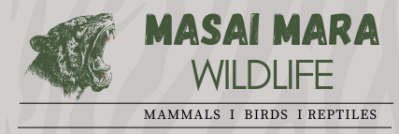- Common Name: Slender Mongoose
- Scientific Name: Herpestes sanguineus
- Swahili Name: Nguchiro
- Maasai Name: Ekisheren
- Size:
- Head-Body Length (HBT): 65 cm (26 inches)
- Gestation: 9 weeks
- Recognition: The Slender Mongoose is a notably slim and agile mongoose with short legs and a grey-brown coat. Its most striking feature is its long, black-tipped tail, which is almost as long as its body. Unlike other mongoose species, it carries its tail high when running or walking, rather than dragging it behind.
Habits and Behavior
- Diurnal and Ground-Dwelling: The Slender Mongoose is primarily active during the day. It rarely ventures far from cover, preferring to stay close to vegetation or tree cover for safety. Although it is mostly encountered on the ground, it is a skilled climber, often scaling trees to hunt for birds and their eggs. Its claws and foot pads are specially adapted for gripping and climbing.
- Polygamous and Territorial: Male Slender Mongooses are polygamous, often sharing their home range with multiple females. They are territorial and use scent-marking to define their areas, which they fiercely defend from other mongooses.
- Aggression and Predatory Nature: Despite its small size, the Slender Mongoose is known for its aggression and daring predatory habits. It feeds on a wide variety of prey, including invertebrates, small vertebrates, birds, and even venomous snakes. This mongoose’s fearless approach and agility allow it to take down surprisingly large or dangerous prey.
- Clever Hunters: The Maasai people know the Slender Mongoose well for its intelligence and cunning, especially when it comes to stealing meat. One Maasai memory recounts a mongoose strangling a Dik-dik, demonstrating its clever hunting techniques.
Diet
- Feeds on: The Slender Mongoose has an omnivorous diet, consuming fruits, seeds, invertebrates like insects, and small vertebrates such as rodents, reptiles, and birds. Its adaptability in diet ensures that it can survive in various environments. Notably, it is one of the few animals that can hunt and consume venomous snakes, making it a formidable predator.
Habitat
- Where to Find: This mongoose is most commonly found on the edges of forests, in well-wooded savanna, and in marshes within the Masai Mara. It thrives in areas with sufficient cover and prey availability, often staying close to thickets or trees that provide protection and hunting grounds.
Conservation Status
- IUCN Status: Least Concern. The Slender Mongoose is widely distributed across sub-Saharan Africa, and its population is currently stable. It faces no significant threats, largely due to its adaptability and generalist diet. However, habitat loss from agricultural expansion and human encroachment could pose future risks in some regions.
Unique Traits
- Highly Vocal: The Slender Mongoose is known for its vocalizations, especially when threatened or alarmed. Birds often raise the alarm when a mongoose is nearby due to its fondness for raiding nests.
- Climbing Abilities: Unlike many other mongoose species that remain grounded, the Slender Mongoose frequently climbs trees to access food, making it a more versatile predator.
- Tail-Carrying Behavior: One of the defining characteristics of this mongoose is how it carries its tail high off the ground when moving, unlike the Ichneumon Mongoose, which drags its tail behind.
Interesting Facts
- Fearless Hunters: Despite their small size, Slender Mongooses are not afraid to hunt larger or more dangerous prey. Their agility and intelligence make them effective hunters, whether they are catching birds, raiding nests, or taking on venomous snakes.
- Social Structure: Male mongooses often share their territories with several females, showing a polygamous social structure, while young females typically stay close to their mothers until they are ready to establish their own territories.
In conclusion, the Slender Mongoose is a fascinating and agile carnivore that plays an important role in the Masai Mara’s ecosystem. With its fearless nature, adaptability, and impressive climbing skills, this mongoose is a dynamic predator despite its small size. While it currently enjoys a stable conservation status, continued habitat preservation will ensure that this clever and tenacious mongoose continues to thrive.
